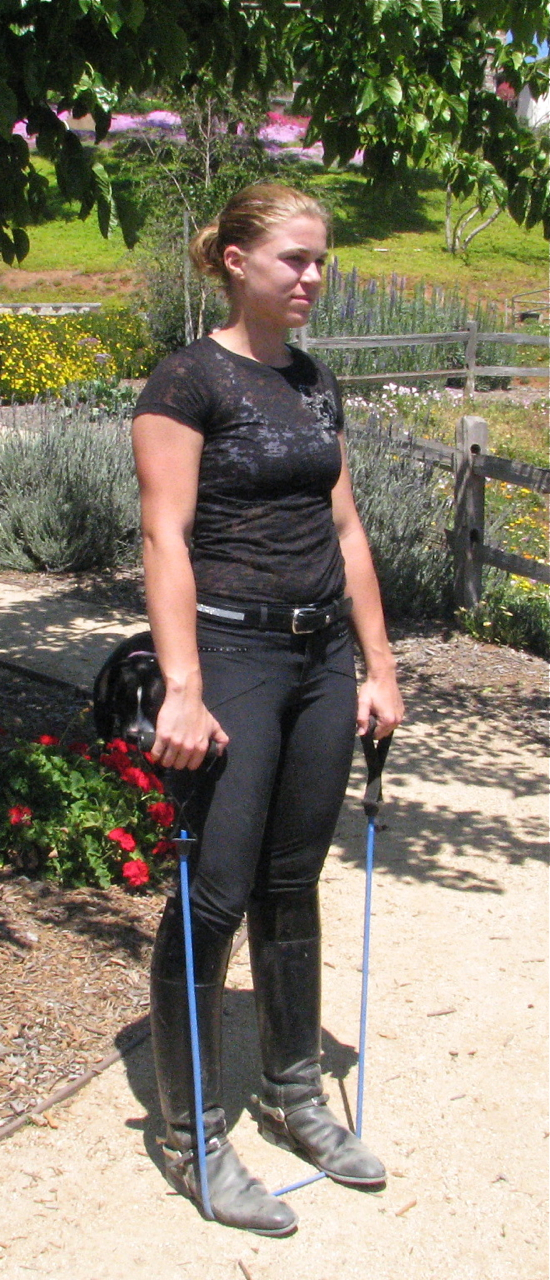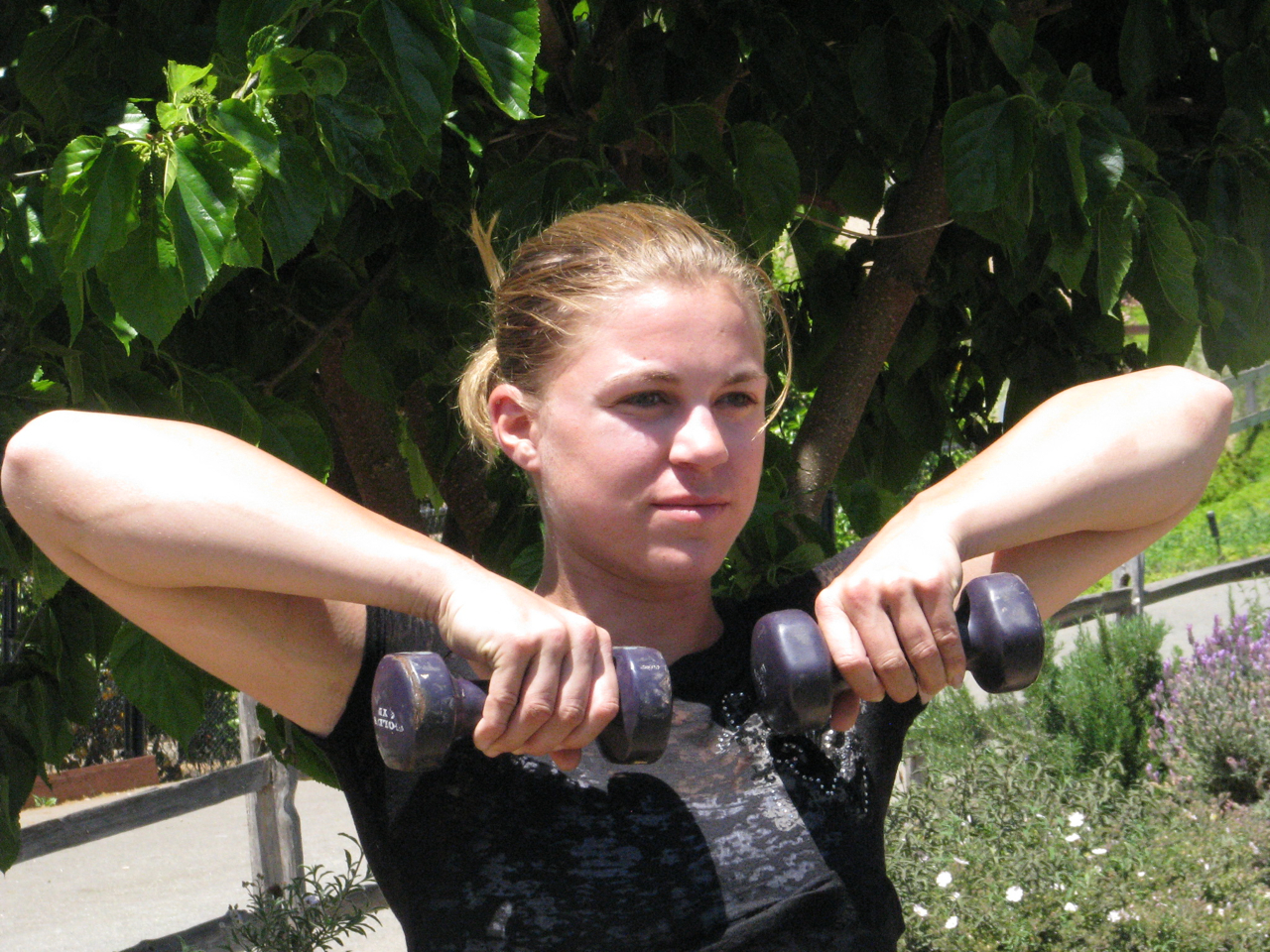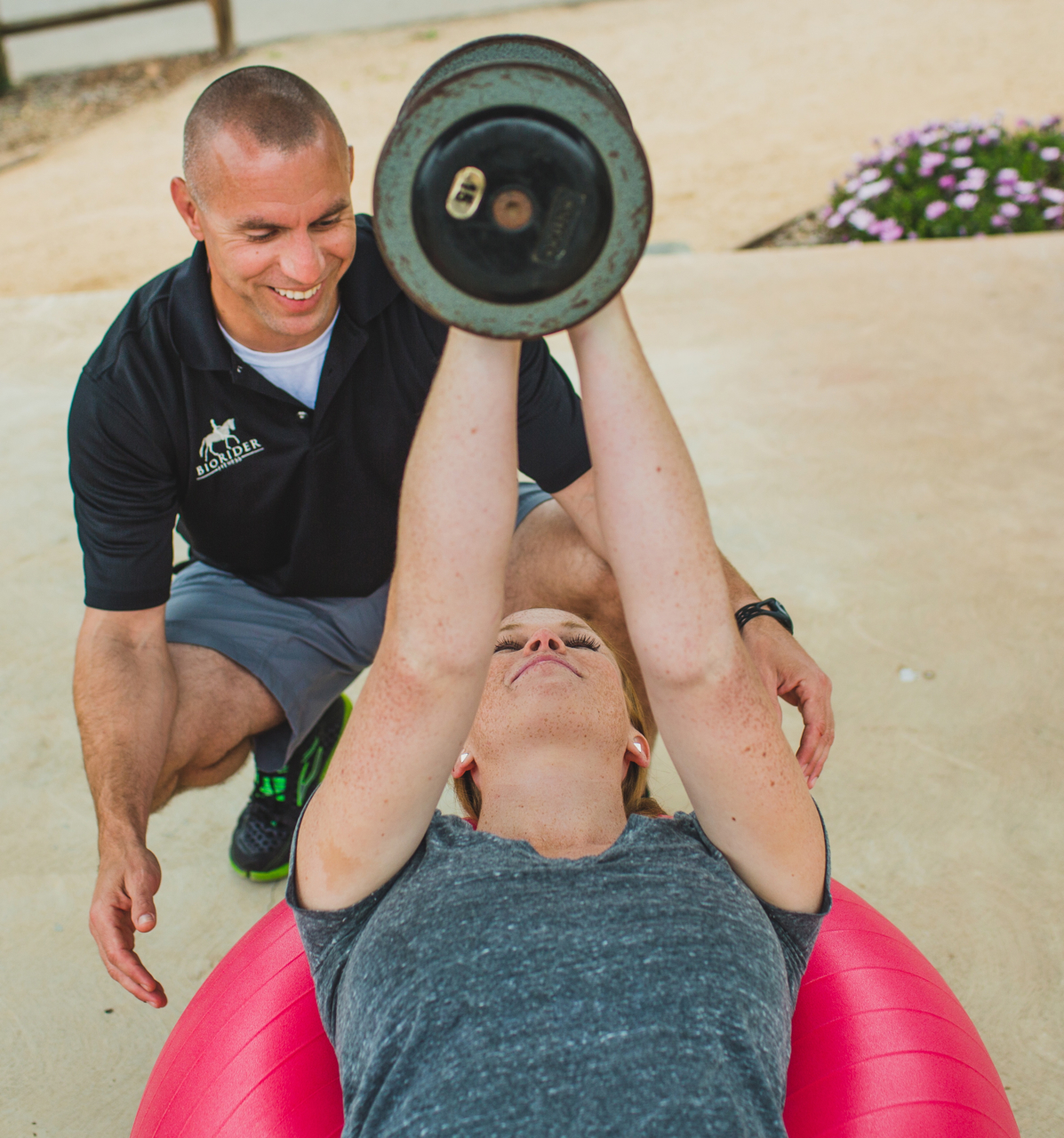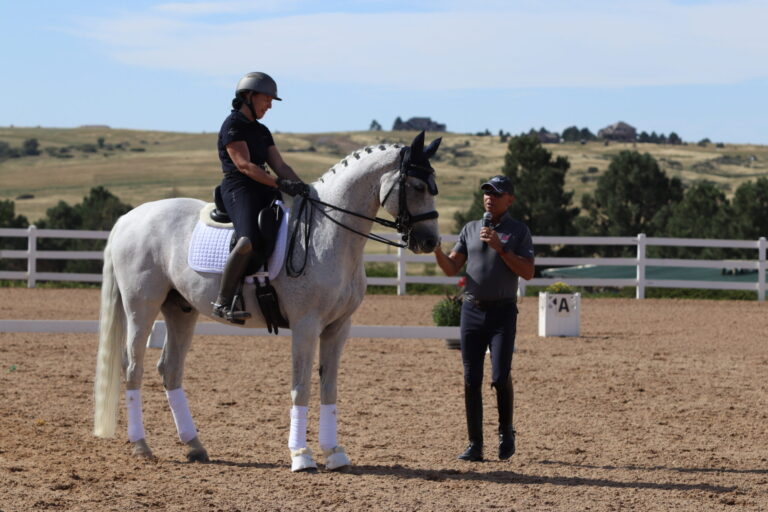The exercises used in the BioRider Fitness program are designed to improve strength and balance for the amateur as well as the professional rider. Olympian Steffen Peters and his students, including Young Rider Brandi Roenick, use the program as part of their riding-fitness regime. And while Peters admits that it’s not always easy to be motivated the morning after a weekend clinic, it’s the discipline that helps him and his students with their riding accomplishments.
“I enjoy working out, especially when it is done. That makes me feel good,” says Peters. “I find it extremely motivating to work with a trainer, and the fact that we work specifically on core muscles is extremely important. In the olden days, we used to work muscle groups separately. Now when we work a leg muscle, for instance, we always engage a core muscle, too. I would encourage everyone to work out, even if it is just a half hour, three times a week. It really makes a difference for our sport. Our horses are athletes and we should be athletes as well.”
As dressage riders, we are constantly working to improve our seat. We are asked to sit up straight, soften our elbows, lift our chest, drop our heels and open our hips. However, without the understanding or the proper tools, this can be a frustrating process. The BioRider Fitness program gives dressage enthusiasts the knowledge and tools to improve their strength and stability as it is specifically designed for riders.
Equestrians are so core-obsessed that they forget about fitness for the rest of their body. It is the biggest tool we have and the core is the center of the support system. So much emphasis is put on developing a solid core that riders forget that the rest of the body also impacts the core. It’s a never-ending cycle—if the core is weak, other areas of the body compensate, and if other areas are weak, then the core has to compensate. If you think the abdominal muscle is the core, then you are expecting all of your body’s weight to be supported by just the front lower torso. What about the upper torso and the muscles in the lower back? Abs are just sheets of muscle that connect the upper and lower body. The core is more than just that. The muscles in the entire torso are responsible for the mechanics of the core.
By utilizing an exercise balance ball, a few light hand weights, a medicine ball, a resistance band and BOSU ball, you can develop your equestrian position and improve your training in the saddle. These exercises are clear-cut, effective and are something that can be done the morning of your ride. The quickest way to results is to block two days a week for conditioning, choose exercises that work out the shoulders, spend at least 20 minutes rotating through various shoulder exercises and teach the upper body how to properly push and pull with the arms. Start to condition your legs when you can do upper-body exercises and your hips are moving. During shoulder presses, chest presses and/or rows, the lower core shouldn’t be compromised in balance or stability. You know when you’re ready to target your legs when you can function independently from the two.
The Exercises
Upright Row
The following exercise works the trapezius muscle and helps to stabilize the neck and shoulders. If this muscle fails, the rider’s entire position collapses. Signs of this include your head bobbing, chin tilted either too low or too high and rounded shoulders. Isometric holds are a great solution to balance strength between the right and left side.
1. Stand with your feet shoulder-width apart.
2. Place an exercise band under your feet and hold the handles, one in each hand.
3. Engage your core by drawing your belly button toward your spine.
4. Raise your hands and elbows to your chin.
5. Keep your elbows higher than your wrists at all times.
6. Keep your wrists firm as your hands move upward toward your chin.
7. Slowly lower your hands to the starting position.
8. Repeat this exercise 12 times.
Your goal is to condition the trapezius to comfortably support your neck and shoulders. Once this exercise becomes easy, you can challenge this muscle by using free weights.


Russian Twist
The following exercise works your oblique muscles, which support the rib cage. A sign of weak oblique muscles is when your hips and shoulders collapse to one side. This exercise will help you keep your shoulders and hips square and teach you proper rotation through the stomach.
1. Rest your upper back on an exercise ball and raise your hips.
2. Square your shoulders and hips and hold a free weight up to the sky with both hands.
3. Secure your arms without locking your elbows.
4. While keeping the ball stable with level hips, carefully rotate your upper body, lowering the weight to your left side in line with your shoulder.
5. Rotate back to center and square your shoulders with your hips.
6. Repeat this exercise 12 times on each side.


Lateral Raises
This exercise engages the shoulder’s medial deltoid and will help stabilize your shoulder more efficiently. A weak medial deltoid can result in reins that give without you noticing. Riders that carry their shoulders too high are accidentally engaging the trapezius instead of the medial deltoid.
1. Hold a 5-pound weight in each hand.
2. Bend your elbows 90 degrees and keep them next to your stomach, not behind.
3. Raise your elbows to shoulder level without changing the bend in them.
4. Pause at the top, breathe and lower your elbows back to the starting position.
5. Do three sets of 12 repetitions for this exercise.


Bridget Braden-Olsen was selected as a Young Rider to ride with Germany’s Conrad Schumacher. Competing in the Junior/Young Rider program for five years, she successfully trained and rode her horse, Dublin, up the FEI levels to secure her USDF gold medal at age 22. Prior to starting BioRider Fitness, she worked for and trained with U.S. Olympians Steffen Peters and Jan Ebeling as well as Germany’s Jochen Hippenspiel. In addition to her personal training business, she also trains dressage out of Sterling Farms located in San Diego County, California (bioriderfitness.com).











